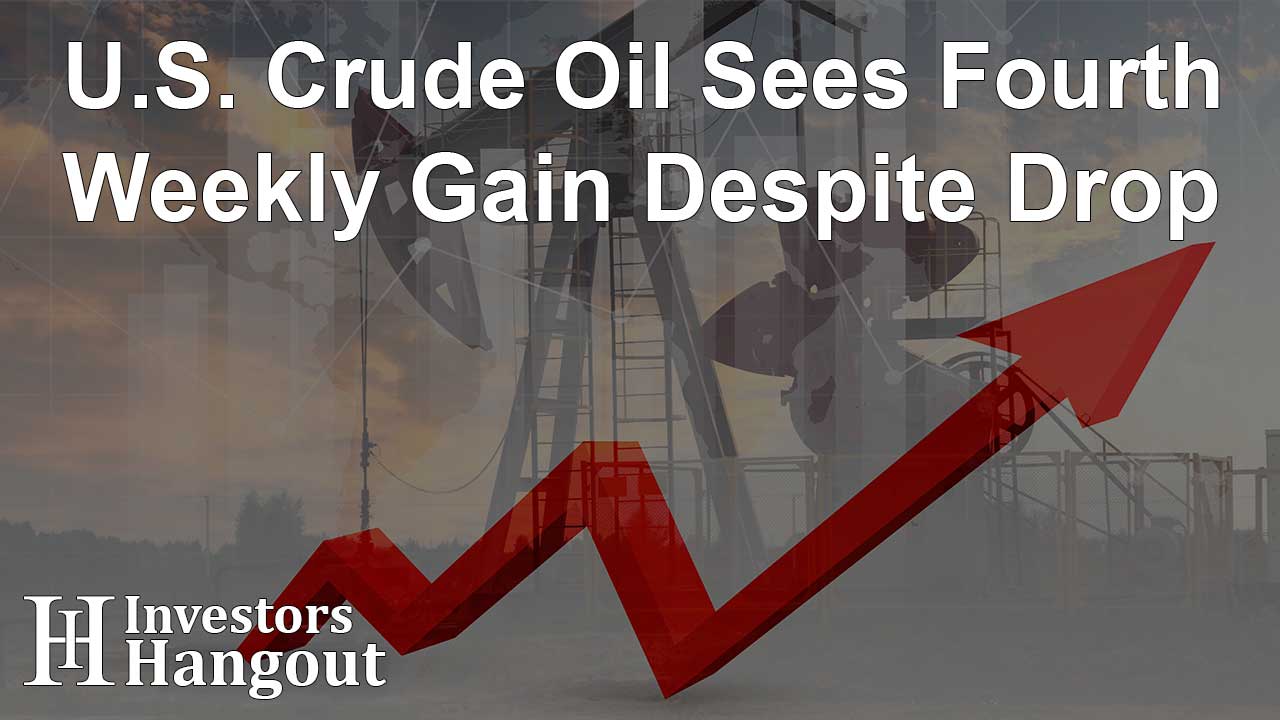U.S. Crude Oil Sees Fourth Weekly Gain Despite Drop

U.S. Crude Oil Prices Drop Amid Hurricane Beryl Concerns
Monday's U.S. crude oil futures dropped almost 1% as traders tracked Hurricane Beryl's influence. The storm touched Gulf Coast production, refining, and export facilities. On Friday, crude prices closed down but showed a fourth straight weekly increase. Recently the benchmark reached a two-month high of $84.52 per barrel. These prices were taken advantage of by traders, which slightly dropped the market. U.S. oil has gained 15.1% year to date even with the decline. Down 65 cents or 0.79%, the West Texas Intermediate August contract settled at $82.51. Declining 0.61%, Brent's September contract came out to be $86.02 per barrel. These swings draw attention to the market's weather-event sensitivity.
Hurricane Beryl Makes Landfall in Texas
Approaching Matagorda, Texas, Hurricane Beryl was a Category 1 storm. Its 80 miles per hour maximum sustained winds were Matagorda sits roughly 150 miles northeast of Corpus Christi. This area is a major U.S. crude export base. Closely monitoring the storm's movement was the National Hurricane Center. Beryl's visit raised questions about possible disturbances. Shell responded by emptying staff from its Perdido platform. About 100,000 barrels daily were coming from the 200 miles south of Galveston platform. Many times, such storms cause Gulf of Mexico precautionary closures.
Impact on Gulf Coast Refining and Production
Arrival of Hurricane Beryl impacted Gulf Coast refining and manufacturing activities. At its Perdido platform, shell shut in production. Given the storm, this action was a preventive one. About 5.5% of the oil output in the Gulf of Mexico came from the platform. Although the storm carried dangers, professionals such as Andy Lipow reduced its long-term effects. Lipow pointed out that supply or pricing would not be much changed by the storm. Operations in refining would somewhat slow down. Delays in product delivery to Florida were expected. Gasoline prices were expected to be constant through the storm overall.
Recent Trends in U.S. Crude Oil Prices
Recent trends in U.S. crude oil prices have been rather noteworthy. The market gained weekly four times consecutively. Prices reached $84.52 per barrel, two months high. This motivated traders to profit from the premium prices. As so, crude futures dropped somewhat. U.S. oil still gains 15.1% year to date, though. Still clearly visible is market sensitivity to events like hurricanes. Analysts keep close attention to these developments. Typical in response to outside events are such fluctuations.
Current Energy Prices Overview
Energy prices displayed different trends lately. The August contract in West Texas Intermediate settled at $82.51 per barrel. This dropped 0.79% from earlier levels. Declining 0.61%, Brent's September contract came to $86.02 per barrel. August contract for RBOB gasoline showed a slight decline to $2.54 per gallon. Still, gasoline prices show a 21% annual increase thus far. Prices for natural gas increased slightly, coming out to be $2.34 per thousand cubic feet. Gas stays down 6.9% year to date, though. These numbers capture the dynamic and responsive energy market of today. Analyzers keep close observation on these prices.
Shell Evacuates Perdido Platform
Shell evacuated its Perdido platform in reaction to Hurricane Beryl. About 200 miles south of Galveston sits the platform. It was turning out almost 100,000 barrels daily. Of Gulf of Mexico output, this accounted for roughly 5.5%. Shell took preventative actions consistent with accepted safety guidelines. Throughout the storm, the company gave staff safety top priority. Common during hurricane threats are such evacuations. Still sensitive to these disturbances is the market. Analyzes such as Andy Lipow do not see long-term effects on prices or supply.
Expert Insights on Hurricane's Market Impact
Professionals offered opinions on the market impact of Hurricane Beryl. Andy Lipow lessened the long-term consequences of the storm on prices and supplies. Customers would still get gasoline without major interruption, he pointed out. Operations in refining would somewhat slow down. Still, this was expected to be only transient. Lipow forecast consistent gasoline prices through the storm. He brought up possible price drifts higher following recent crude futures increases. Analysts stay wary but also hopeful. They keep close attention on the evolution of the storm.
Gasoline Price Trends and Forecasts
Gasoline prices have lately shown minor fluctuations. On Monday, prices at the pump averaged roughly $3.50 per gallon country-wide. This was three cents less than last month but one cent higher than last week. Prices could climb to roughly $3.60 in the next weeks, analysts project. Chief Oil Analyst Denton Cinquegrana of Oil Price Information Service offered his observations. He thinks unless major events take place, gasoline prices won't reach $4 per gallon. Recent crude futures swings could have a minor effect on prices. The market stays rather steady overall. Forecasts based on present patterns are still given by analysts.
About The Author
Contact Caleb Price privately here. Or send an email with ATTN: Caleb Price as the subject to contact@investorshangout.com.
About Investors Hangout
Investors Hangout is a leading online stock forum for financial discussion and learning, offering a wide range of free tools and resources. It draws in traders of all levels, who exchange market knowledge, investigate trading tactics, and keep an eye on industry developments in real time. Featuring financial articles, stock message boards, quotes, charts, company profiles, and live news updates. Through cooperative learning and a wealth of informational resources, it helps users from novices creating their first portfolios to experts honing their techniques. Join Investors Hangout today: https://investorshangout.com/
